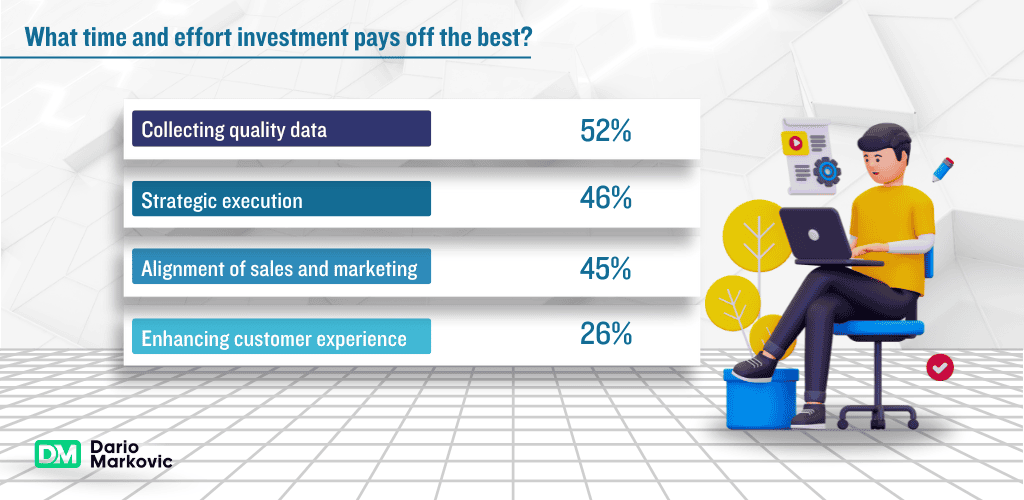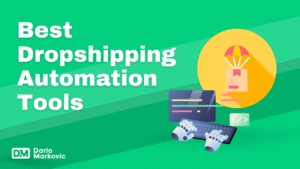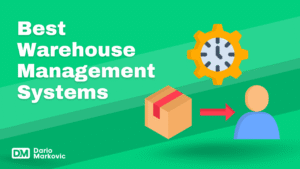Regarding the best ecommerce marketing automation software, I’ve spent over a decade mastering the ins and outs of many of this powerful tool. From boosting sales to enhancing customer engagement, I’ve experienced firsthand how effective it can be.
Now, I want to share my knowledge with you. In this blog, you’ll learn from my years of experience and discover how to leverage ecommerce marketing automation to its fullest potential.
Let’s get into it and explore the strategies that can transform your business!
Let’s skip the fluff and get straight to the point. We’ll look at what each option offers, the pros and cons, and everything in between.
This way, you can make a choice that fits your business perfectly.
Snapshot of Top Customer Service Software Solutions

If you are in a hurry and want to know what software is best for something, check them out below.
- Best for All-Round Performance: Zendesk
- Best for Ecommerce: Gorgias
- Best for Messaging and Automation: Intercom
- Best for Budget-Conscious Businesses: Freshdesk
- Best for Multichannel Support: LiveAgent
- Best for Email-Centric Support: Help Scout
- Best for IT Teams: Jira Service Management
- Best for Service Process Automation: Salesforce Service Cloud
- Best for Email and Communication Management: Front
Have you ever felt exhausted from juggling emails, managing social media posts, and taking on endless marketing chores? We’ve all been there.
You’ve found e-commerce marketing automation, the hero you’ve been looking for. Imagine this: a reliable partner who takes care of all your mundane chores and allows you to concentrate on your business growth and increasing sales. It sounds like a great idea, doesn’t it?
E-commerce marketing automation is similar to an assistant in meeting your marketing requirements. The goal isn’t to replace the human touch but rather to give you the ability to accomplish greater results with less effort.
Are you ready to discover how you can transform your business e-commerce? Let’s go!
What Is Ecommerce Marketing Automation?
Ecommerce Marketing Automation is a game-changer. It’s the secret sauce that helps businesses save time, reduce errors, and deliver personalized experiences to customers at scale.
Marketing automation tools let you automate repetitive tasks like email campaigns, social media posts, and targeted ads. This frees up your team to focus on more impactful work. But automation isn’t just about efficiency.
It’s also about sending the right message to the right person at the right time. With e-commerce marketing automation, you can trigger contextual messages based on customer actions – like a purchase confirmation after an order or a price drop alert for a product they’ve been eyeing.
Top 5 Benefits of Ecommerce Marketing Automation
These are the benefits of ecommerce marketing automation:
- Saves serious time and resources. By automating tasks, you can focus on big-picture strategies and creative campaigns.
- Automation reduces human error. When processes run on autopilot, there`s less room for mistakes or forgotten steps.
- Delivers personalized, timely messages to customers - at scale. This helps you maximize your marketing budget by increasing relevance and converson rates.
- It enables consistent, cross-channel experiences. By automating mesages across email, social media, web, and more, you create seamless journeys that nurture customer relationships.
- Marketing automation software is a great tool to increase the number of subscribers you have. You can build landing pages that function as lead magnets in order to increase your list.
Types of Ecommerce Marketing Automation
There are many types of e-commerce marketing automation, each focused on a specific aspect of the customer journey.
Some key categories include:
• Email marketing automation for welcome series, abandoned carts, post-purchase flows, and more
• Social media automation for scheduling posts, monitoring mentions, and reporting
• Content marketing automation to plan, create, and promote blog posts, videos, etc.
• Customer relationship management (CRM) automation to track interactions and personalize communications
• Search engine optimization (SEO) automation for keyword research, link building, and rank tracking.
The type of automation you choose depends on your business goals and resources. Many brands start with email marketing automation, as it tends to have the highest ROI. Over time, you can layer on additional types of automation to create a well-rounded e-commerce marketing automation strategy.
15 Best Ecommerce Marketing Automation Software
To keep things simple and not overload you with information, let’s start by looking at four of the best ecommerce marketing automation software.
I’ve personally tested each of these, so this is based on my own hands-on experience.
Overall
4.2
4.3
4.0
4.1
User Ratings
4.0 (28 votes)
4.0 (27 votes)
4.0 (3 votes)
3.0 (6 votes)
Best For
Drop shipping, print on demand, small stores, boutiques, brick and mortar.
Private label B2C businesses, larger inventories.
Content driven brands, small to medium stores.
Print on demand, small stores, boutiques, brick and mortar.
Pricing
$29 - $299
$29 - $299
Free (Hosting Not Included)
$23 - $49
Pricing Based On
Features, User Accounts, Transaction Fees
Features & Sales
Hosting, Features, Extensions
Support, Storage & Features
Payment Gateways
100+
55+
100+
35+
Additional Transaction Fees
0 - 2%
None
None
0 - 3%
Value
4.0
4.0
4.5
5
Features
3.8
3.9
3.9
3.7
Performance
3.9
4.5
3.1
3.9
Features
4.9
4.8
3.3
4.2
Design & Themes
4.0
3.8
4.3
4.7
Integrations
4.6
4.2
4.1
3.5
MailChimp - My Favorite Email Marketing Tool
Email marketing automation software is the backbone of e-commerce automation.
Mailchimp: An all-in-one marketing platform with robust email automation features
Insider: AI-native platform for individualized cross-channel customer experiences
Klaviyo: An email marketing tool built specifically for e-commerce businesses
Omnisend: A marketing automation platform with strong email and SMS capabilities
Brevo: A platform and CRM suite for email (SMS, WhatsApp, live chat, and chatbots)
Drip: An Ecommerce marketing automation solution with a focus on email personalization, customer segmentation, and analytics.
Proof: Marketing tool that helps companies improve their website conversion rates through social proof marketing.
Moosend: An email marketing and automation software that offers a suite of tools for email marketing
Acquia: A digital experience platform (DXP)
Look for a tool that integrates with your e-commerce platform and offers pre-built automation workflows for common scenarios like abandoned carts and welcome series.
Hootsuite - Social Media Management Platform
Managing multiple social media profiles can be a full-time job. These tools can help:
• Hootsuite: A social media management platform that lets you schedule posts, monitor mentions, and analyze performance.
• Sprout Social: An all-in-one social media management tool with robust automation features.
• Buffer: A simple tool for scheduling and publishing content across social channels.
Look for a tool that supports the social networks where your audience is most active and offers features like content calendars and performance analytics.
CoSchedule - Content Marketing
Content marketing is essential for driving traffic and building brand authority.
These tools can streamline your efforts:
• CoSchedule: An all-in-one content marketing platform for planning, executing, and measuring your strategy
• SEMrush Content Marketing Toolkit: A suite of tools for researching topics, optimizing content, and tracking performance
• HubSpot Content Marketing: A platform for planning, producing, and promoting content across channels
Look for a tool that integrates with your existing tech stack and offers features like keyword research, content optimization, and performance tracking.
Another 4 of my Favorite Ecommerce Marketing Automation Tools
Overall
4.0
4.8
4.5
4.4
User Ratings
4.0
4.9
4.7
4.6
Best For
small to medium-sized businesses, online creators, hobbyists, and ecommerce entrepreneurs
enterprise marketers and large businesses
Content driven brands, small to medium stores.
small to medium-sized ecommerce businesses l
Pricing
free - $350/month
customized
Free - $18/month
$39 - $49
Pricing Based On
Features, User Accounts, Transaction Fees
Features & Sales
Hosting, Features, Extensions
Support, Storage & Features
Payment Gateways
4
N/A
4
5
Additional Transaction Fees
$12.75
N/A
None
$10/month per 500 subs
Value
4.0
4.8
4.5
4.4
Features
3.8
4.8
4.5
4.5
Performance
4
4.8
4.5
4.4
Features
4.5
4.7
4.5
4.5
Design & Themes
4.0
4.8
4.6
4.6
Integrations
4.5
4.8
4.4
4.5
Key Features to Look for in an Automation Platform
With so many automation tools available, it’s important to choose one that fits your specific needs.
Here are some key features to look for:
• Ease of use: The tool should be intuitive and user-friendly, even for non-technical team members.
• Integrations: Look for a platform that integrates with your existing e-commerce stack, including your website, email service provider, and social media channels.
• Segmentation: The ability to segment your audience based on demographics, behaviors, and preferences is crucial for delivering targeted, personalized experiences.
• Automation workflows: Pre-built workflows for common e-commerce scenarios can save you time and resources.
• Performance tracking: Look for a tool with robust analytics and reporting features to help you measure and optimize your campaigns. Remember, the goal of automation is to scale your efforts without sacrificing quality.
Choose a platform that empowers your team to work smarter, not harder.
"E-commerce marketing automation is your ticket to saving time and boosting sales. It automates the boring stuff - like emails and social posts - so you can focus on bigger ideas. Plus, it gets personal with customers, sending them just what they need when they need it."
Dario Markovic
Best Practices for Implementing Ecommerce Marketing Automation
Marketing automation is a crucial tool for e-commerce businesses. But like any tool, it’s only as effective as the strategy behind it.
To get the most out of your automation efforts, you need to focus on personalization, balance automation with human interaction, ensure consistency across platforms, regularly test and optimize, and stay updated with the latest trends.
So, here’s the plan – we’ll explore these key tactics together and find out how to apply them successfully in your e-commerce online venture. Personalization is the key to making your automated marketing messages feel less robotic and more human.
By leveraging customer data, you can create targeted content, product recommendations, and offers that resonate with individual customers.
For example, you can use a marketing automation tool to send personalized email campaigns based on a customer’s browsing and purchase history. If a customer has shown interest in a particular product category, you can send them targeted recommendations and promotions related to that category.
Want to boost your email open rates?
Slapping a personal touch on those subject lines could crank them up by as much as 50%.
That’s customization at its finest, right there.
Balancing Automation and Human Interaction
While automation can handle many tasks, it’s important to strike a balance between automated processes and human interaction. Customers still crave personal touches and genuine connections with brands.
One way to achieve this balance is by using chatbots to handle routine inquiries and FAQs, while having human agents available for more complex issues or when a personal touch is needed.
You can also use automation to send personalized follow-up messages after a customer interacts with a human agent, thanking them for their business and offering additional support if needed.
Consistency is crucial when implementing marketing automation across multiple channels and touchpoints. Your brand voice, messaging, and visual identity should remain cohesive whether a customer interacts with you via email, social media, or your website.
Whip up a style guide to keep your brand’s voice and look on the straight and narrow. Use this guide as a reference when creating automated campaigns and content. You can also use a centralized marketing automation platform that allows you to manage and monitor campaigns across multiple channels from a single dashboard.
It makes keeping everything consistent a breeze and lets us easily see how we’re doing.
Regular Testing and Optimization
Marketing automation is not a set-it-and-forget-it strategy.
To maximize its effectiveness, you need to regularly test and optimize your campaigns. Split testing your automated campaigns is a smart move if you’re looking to fine-tune them.
By mixing up our approach – changing email titles, testing new kinds of messages and offers as well as adjusting our asks – we’ll soon learn which combinations strike a chord with our readers. Then it’s just a matter of tweaking until everything clicks perfectly into place.
For example, you can test two different subject lines for an automated cart abandonment email to see which one has a higher open rate.
Or you can test different product recommendation algorithms to see which one leads to higher conversion rates.
Staying Updated with Trends
The world of e-commerce marketing automation is constantly evolving.
To stay competitive, you need to stay updated with the latest trends and best practices.
Some current trends to watch include the rise of AI-powered personalization, the increasing importance of omnichannel marketing, and the growing use of chatbots and conversational commerce.
For anyone looking to stay plugged in—registering for workshops is smart; shadowing movers and shakers virtually could give you an edge too. Oh.
Filling your reading list from curated sources helps heaps as well. You can also join online communities and forums to connect with other e-commerce marketers and share insights and best practices.
Watch closely as new tendencies emerge – they’re key opportunities for sharpening your approach in automating marketing tasks while cruising past any competition.
The Future of Ecommerce Marketing Automation
As technology continues to evolve, so too does the future of e-commerce marketing automation.
The way tech is heading, with smart personalization through AI and everything connected from your phone to the store you walk into, it feels like there’s no limit to what can be done. But with great power comes great responsibility.
As marketers, we must use these tools ethically and responsibly, always putting the customer first. So what does the future hold for e-commerce marketing automation? Let’s take a look at some of the emerging trends and how they might impact your business.
One of the biggest trends in marketing automation is the rise of AI and machine learning. Thanks to these tech wonders, marketers are now whipping up super customized experiences like never before, and they’re doing it on a grand scale.
For example, AI-powered recommendation engines can analyze a customer’s browsing and purchase history to deliver highly relevant product recommendations in real-time. This not only improves the customer experience but also drives higher conversion rates and average order values.
Another trend to watch is the increasing importance of omnichannel marketing. Customers expect seamless experiences across all touchpoints, whether they’re shopping on your website, browsing your mobile app, or visiting your brick-and-mortar store.
Marketing automation tools that can integrate with multiple channels and platforms will become increasingly essential for delivering these omnichannel experiences.
Impact of AI and Machine Learning
AI and machine learning are already transforming the world of e-commerce marketing automation. But their impact is only going to grow in the coming years.
The magic wand for seeing ahead?
It’s all about artificial intelligence powering through guesses like a pro. By analyzing vast amounts of customer data, AI algorithms can predict future behavior and preferences with incredible accuracy. This means marketers can deliver even more targeted and personalized experiences, anticipating customer needs before they even arise.
Imagine letting AI take over crafting compelling stories and polishing your ads – that’s what modern marketing looks like now.
For example, AI-powered tools can analyze top-performing content and generate new variations based on those insights.
"The future of marketing is not about being everywhere, it's about being the right somewhere for the right someone."
Dario Markovic
Preparing for Future Changes
As things keep changing in the world of e-commerce marketing automation, remember, flexibility and readiness are your best friends. This means investing in flexible, scalable tools that can grow with your business and adapt to changing customer needs.
It also means fostering a culture of experimentation and continuous learning within your organization. Encourage your team to test new ideas, learn from failures, and iterate quickly. Finally, don’t forget the human element. While automation can handle many tasks, it’s the human touch that truly sets brands apart.
Invest in your people, empower them to be creative and empathetic, and never lose sight of the customer at the heart of everything you do. It looks like marketing automation in the world of e-commerce has a lot of sunny days ahead.
By staying informed, adaptable, and customer-centric, you can harness its power to drive growth, build lasting relationships, and create a better world for us all.
Dario's Summary
Marketing automation in the e-commerce world is changing the game for online shops. It’s not about replacing the human touch, but rather empowering you to work smarter, not harder.
Keep those repeat visits rolling in! Just automate what’s tedious, chat like a friend with personalized messaging, and lean on clever tech to weave it all seamlessly together. And the best part? You’ll have more time and energy to focus on what matters – growing your business and making those sales.
So, whether you’re just starting or looking to take your e-commerce game to the next level, embracing marketing automation is a no-brainer.
Get ready to watch your sales soar and your customers fall in love with your brand. The future of e-commerce is here, and it’s automated!
FAQ
Ecommerce marketing automation tools help businesses automate repetitive marketing tasks like email campaigns, social media posts, and customer segmentation. They streamline processes, improve efficiency, and enhance customer engagement.
Using these tools can save time, reduce manual work, and increase revenue by targeting customers more effectively. They help you personalize marketing efforts, track performance, and make data-driven decisions.
Some top tools include:
- Klaviyo: Great for detailed analytics and personalized email marketing.
- Omnisend: Best for SMS marketing and email campaigns.
- HubSpot Marketing Hub: Ideal for large teams with comprehensive marketing needs.
- Mailchimp: User-friendly and perfect for small to medium-sized businesses.
Consider your business size, budget, and specific needs. Look for tools that offer the features you need, such as email marketing, SMS campaigns, CRM integration, and analytics. Reading user reviews and testing free trials can also help.
Pricing varies widely:
- Mailchimp: Free to $350/month, depending on features and contact list size.
- Klaviyo: Starts at $20/month, scaling with the number of contacts.
- Omnisend: Free to $199/month, based on email and SMS volume.
- HubSpot Marketing Hub: Starts at $50/month, with higher tiers for more features.
Some tools may charge extra fees for exceeding contact or email limits. For example, Mailchimp charges for additional contacts and email sends beyond your plan’s limits. Always check the pricing details of each tool.
Most tools support major credit and debit cards. Some, like Mailchimp, also support PayPal and other regional payment methods. Check each tool’s payment options to ensure they meet your needs.
Most ecommerce marketing automation tools offer integrations with popular platforms like Shopify, WooCommerce, and various CRM systems. This allows for seamless data transfer and more efficient marketing workflows.
Key features include:
- Email and SMS marketing: Automate and personalize campaigns.
- Customer segmentation: Target specific groups based on behavior and preferences.
- Analytics and reporting: Track performance and make data-driven decisions.
- CRM integration: Sync customer data for more personalized marketing.
Yes, many tools offer features like abandoned cart emails, personalized recommendations, and loyalty programs to help retain customers and encourage repeat purchases.





